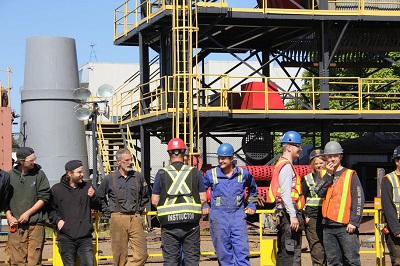 Wednesday, May 8, 2024
Wednesday, May 8, 2024  Wednesday, May 8, 2024
Wednesday, May 8, 2024 
Got news? Next submission deadline is Friday at 5:00 p.m.
Click here to submit YOUR news

The province’s industry training authority says opportunities for skilled trades trainees may soon be on the up in British Columbia, following four years of decline in apprenticeship registrations.
Apprenticeships are accredited training programs made up mostly of paid work experience that lead to certifications in skilled trades ranging from hairstyling to heavy equipment operation. The most recent data available through Statistics Canada shows the number of people enrolled in apprenticeships in B.C. hit a four-year low in 2016. In the same time period, the province’s labour force grew by 107,000 people.
B.C. is also going through a labour shortage in sectors that use skilled trades, like construction. Only 5,400 people who work in construction were out of work in B.C. in October, representing an unemployment rate less than three per cent.
In that context government, industry, and labour groups have all said there’s an urgent need to train the next generation of skilled tradespeople.
Rod Bianchini, chief operating officer of the Industry Training Authority, which oversees skilled trades training in B.C., said Monday it’s an “excellent time” to start an apprenticeship in B.C., and that there’s reason to believe enrolments could go back up again, thanks in part to a controversial provincial policy pertaining to public infrastructure projects.
The NDP government has continued investing in training facilities at colleges, like the previous B.C. Liberal government did through its 2016 Jobs Plan. The NDP have also promised to use a community benefits agreement framework for public infrastructure projects — an agreement that, among other provisions aimed at improving welfare in communities where construction projects occur, sets a requirement that 20 per cent of work on public projects be completed by apprentices.
Continue reading in The Star Vancouver
Watch our video and learn more about the benefits of joining Construction Links Network – the peer-to-peer network sharing platform for the construction, building and design community.
Press Releases | Project Updates | New Appointments | Awards & Milestones | Company News | New Products/Services | Brochures | Videos | Infographics | Blog Sharing | Events and More